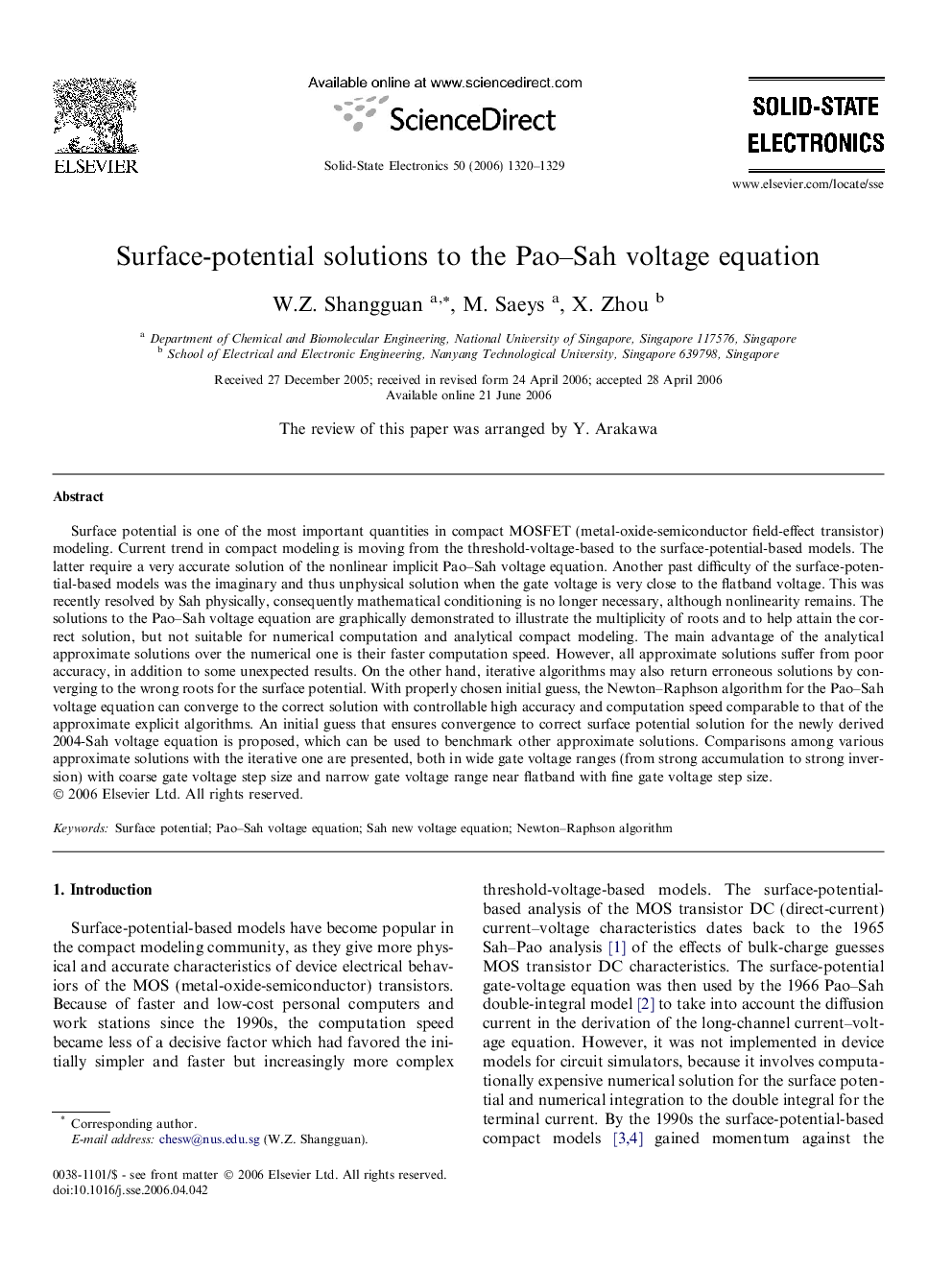| Article ID | Journal | Published Year | Pages | File Type |
|---|---|---|---|---|
| 749530 | Solid-State Electronics | 2006 | 10 Pages |
Surface potential is one of the most important quantities in compact MOSFET (metal-oxide-semiconductor field-effect transistor) modeling. Current trend in compact modeling is moving from the threshold-voltage-based to the surface-potential-based models. The latter require a very accurate solution of the nonlinear implicit Pao–Sah voltage equation. Another past difficulty of the surface-potential-based models was the imaginary and thus unphysical solution when the gate voltage is very close to the flatband voltage. This was recently resolved by Sah physically, consequently mathematical conditioning is no longer necessary, although nonlinearity remains. The solutions to the Pao–Sah voltage equation are graphically demonstrated to illustrate the multiplicity of roots and to help attain the correct solution, but not suitable for numerical computation and analytical compact modeling. The main advantage of the analytical approximate solutions over the numerical one is their faster computation speed. However, all approximate solutions suffer from poor accuracy, in addition to some unexpected results. On the other hand, iterative algorithms may also return erroneous solutions by converging to the wrong roots for the surface potential. With properly chosen initial guess, the Newton–Raphson algorithm for the Pao–Sah voltage equation can converge to the correct solution with controllable high accuracy and computation speed comparable to that of the approximate explicit algorithms. An initial guess that ensures convergence to correct surface potential solution for the newly derived 2004-Sah voltage equation is proposed, which can be used to benchmark other approximate solutions. Comparisons among various approximate solutions with the iterative one are presented, both in wide gate voltage ranges (from strong accumulation to strong inversion) with coarse gate voltage step size and narrow gate voltage range near flatband with fine gate voltage step size.
